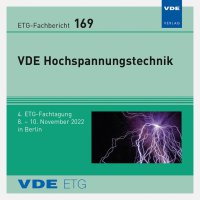Innovative Synthetic High-Power Test Circuit for the Investigation of MVDC Circuit Breakers – Setup, Functionality and Application
Conference: VDE Hochspannungstechnik - 4. ETG-Fachtagung
11/08/2022 - 11/10/2022 at Berlin, Germany
Proceedings: ETG-Fb. 169: VDE Hochspannungstechnik 2022
Pages: 6Language: englishTyp: PDF
Authors:
Langenberg, Nils; Kimpeler, Simon; Wienkamp, Philipp; Wuerde, Andre; Moser, Albert (IAEW at RWTH Aachen University, Aachen, Germany)
Abstract:
For the safe and reliable operation of electrical grids, circuit breakers play a crucial role. Their task is to interrupt nominal as well as fault currents. The underlying function is to protect connected grid equipment and to ensure a continuous supply of electrical energy via healthy grid parts. This context applies independently of the grid’s voltage form. To ensure the functionality of newly designed and developed Direct Current (DC) circuit breakers, adequate testing infrastructure is fundamentally important. Since Medium Voltage DC (MVDC) applications are coming more into focus, investigation and testing of MVDC circuit breakers are becoming increasingly important. For this, the reproduction of actual stresses on circuit breakers during DC current interruption in nominal as well as fault conditions is required. However, since the actual design of future MVDC grids is not yet defined or standardized and due to a high variety of system parameters with undetermined influence on the actual values of the stresses to be considered, a flexible testing method is necessary. In this paper, a novel synthetic test infrastructure at RWTH Aachen University is further detailed and underlined by exemplary results. For the generation of the required current and voltage characteristics, a high-power power electronic buck converter (PEBC) is applied. In a demonstrator setup at RWTH Aachen University, the functionality is proven. This paper focuses on the general setup of the introduced synthetic high-power test circuit. The modularized structure and interconnection of individual test circuit modules is detailed and the functionality of the control setup is demonstrated. Concluding the paper, the test circuits’ functionality is discussed on the basis of exemplary current envelope curve generation tests.


